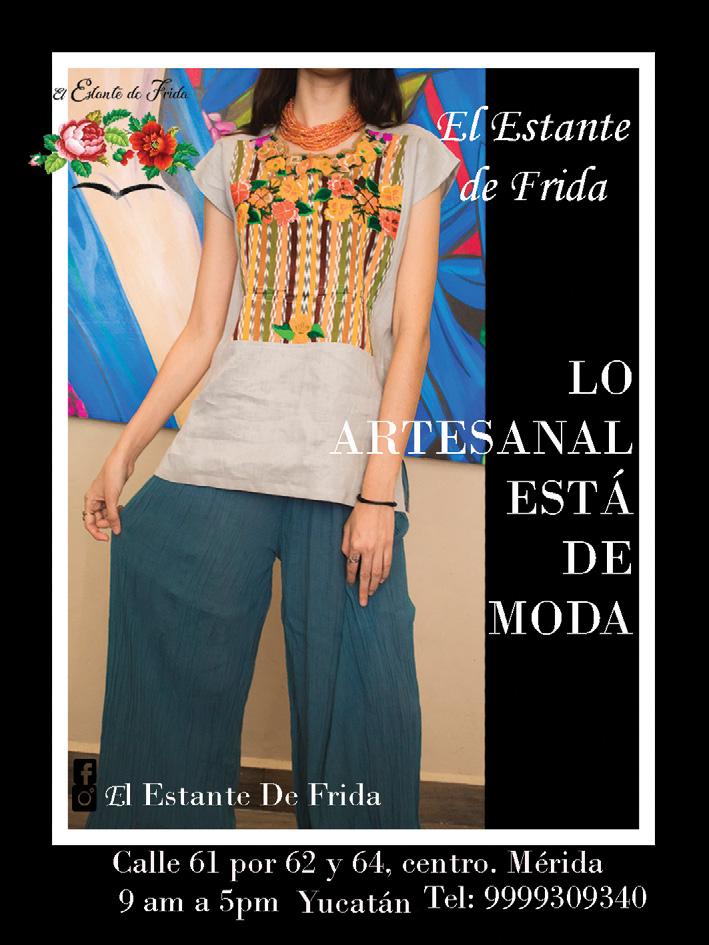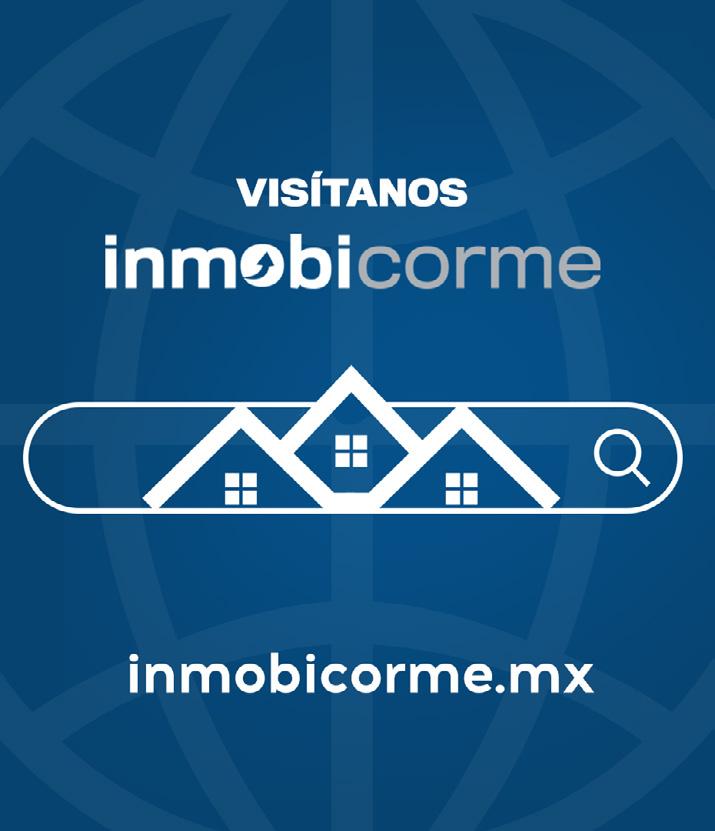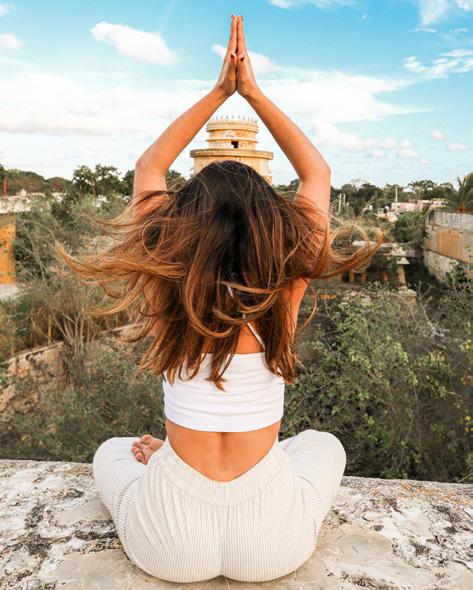
10 minute read
Lifestyle
La magia del yoga
como estilo de vida por Agustín Gonzaga
Advertisement
Mérida es una de las ciudades más seguras del mundo, en la ciudad blanca se percibe un ambiente de tranquilidad, mismo que se ve reflejado en la vida diaria de sus habitantes. Si podemos rescatar algo de la situación actual, es que ha despertado en nosotros la preocupación de nuestra salud y gracias a esto hemos adoptado nuevos hábitos.
La popularidad del yoga en la ciudad va creciendo día a día, es uno de esos nuevos hábitos que está siendo adoptado por los yucatecos, no obstante, es importante saber que el yoga es una ciencia / disciplina que surgió en la India.
Gracias a la globalización, fue llegando a la sociedad occidental quien ya tenía un interés por la práctica Fitness, adaptando el yoga a su estilo de vida, aunque es importante no olvidar que su verdadera esencia va más allá de una práctica física, pues las posturas son apenas una Mérida, the “White City,” is one of the safest cities in the world, where a climate of tranquility is perceived and is reflected in the daily life of its inhabitants. If we can discern anything from the current situation, it is that concern about our health has awakened in us. This is a good moment adopt new habits. The popularity of yoga in the city is growing day by day. It is one of those new practices that Yucatecans have come to embrace; however cognizant that yoga is a science/ discipline that originated in India. Thanks to globalization, however, people who already had an interest in the practice of fitness began to reach Western society, adapting yoga to their lifestyle. It is important to remember that its true essence goes beyond a physical practice, since the postures they are just a small part of yoga practice. Some benefits of yoga from the Western point of view are: • Benefits the immune system; pequeña parte de la práctica del yoga. Algunos beneficios del yoga desde el punto occidental son: • Mejora el sistema inmune • Reduce el riesgo de enfermedades cardiovasculares • Reduce el estrés y conduce a la calma mental • Mejora la salud ósea y previene la osteoporosis • Regula la respiración y previene enfermedades pulmonares • Mejora el sueño y nos despertamos más descansados •Mejora el rango del movimiento articular • Aumenta la fuerza
The Magic of Yoga as a Lifestyle
muscular
• Reduces the risk of cardiovascular diseases; • Reduces stress and leads to mental calm; • Improves bone health and prevents osteo•Mejora la postura y protege la columna vertebral Sin embargo, más que un hábito o un deporte, el yoga es un estilo de vida que se acopla perfecto a cualquier persona. El yoga es inclusivo, te enseña a que todos y todo somos uno mismo, porque el objetivo real del yoga es la autorrealización de uno mismo en un espacio de amor y paz que puede ser practicado por todo el mundo. Para que se convierta en un estilo de vida, es necesario llevar la práctica de yoga fuera del tapete y no solamente dentro de él.
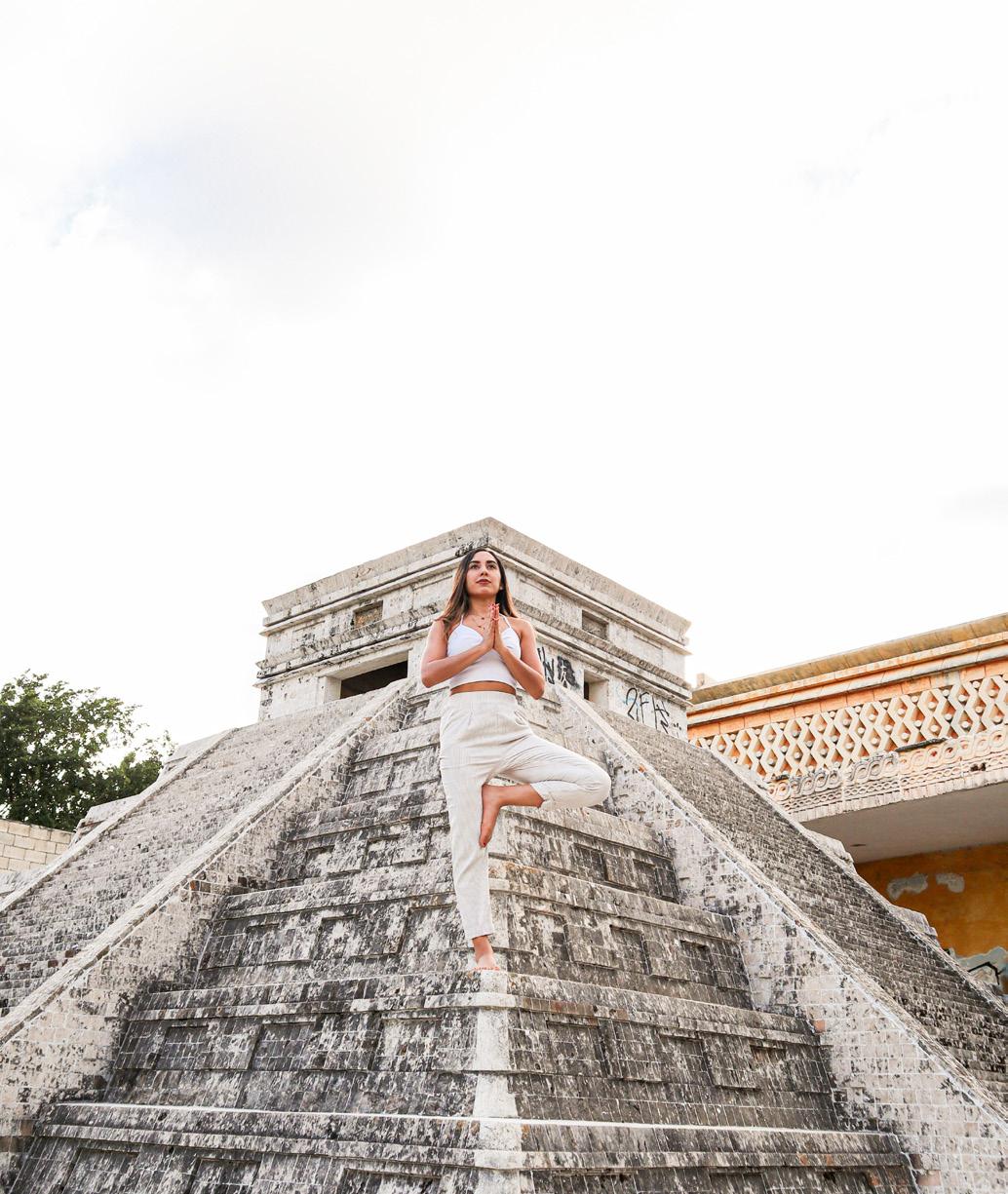
Editorial completa en explore.mx
porosis; • Regulates respiration and prevents lung diseases; • Improves sleep and we wake up more rested; • Improves range of joint motion; • Increases muscle strength; and • Improves posture and protects the spine.
More than a habit or sport, however, yoga is a lifestyle that is perfect for anyone. It is inclusive: it teaches you that we are all one’s self. After all, the real goal of yoga is the self-realization of oneself in a space of love and peace that can be practiced by everyone.
For it to become a lifestyle, of course, it is necessary to take the practice of yoga off the mat and not just on it.

LAS IGLESIAS & CAPILLAS GÓTICAS
DE MÉRIDA & YUCATÁN
Desde zonas arqueológicas, cenotes, haciendas, playas, grutas, pueblos mágicos, entre otros, son algunas de las tantas maravillas que tiene el territorio yucateco. Si eres de aquellos turistas que cuando visitan un lugar siempre estás tomando fotografías y te encanta apreciar las construcciones antiguas, en el Estado hay muchas iglesias coloniales con una majestuosa arquitectura que atrapará tu mirada. En esta ocasión, le diremos de algunas iglesias y capillas góticas que están en Mérida y en Yucatán. Con tan solo contemplarlas, visualmente te enriquecerás, te aseguramos que querrás tomarle muchas fotos y subirlas a tu Instagram. En esta ocasión, algunas iglesias y ca- pillas góticas que están en Mérida y en Yucatán. Con tan solo contemplarlas, visualmente te enriquecerás, te asegu- ramos que querrás tomarle muchas fo- tos y subirlas a tu Instagram.

San Juan Bautista, · Foto editorial y portada de: Edgar Coba Nuestra Señora del Carmen (Quintero) Ubicada en la histórica Colonia de Chuminópolis y frente a los terrenos de la quinta “El Olvido” que fue propiedad de la familia Quintero. Esta capilla fue construida a finales del siglo XIX y a principios del siglo XX durante el Porfiriato, cuando el Ingeniero Rafael R. Quintero cedió una parte del terreno de su finca.
San Juan Bautista Localizado en la comisaría de Xcunyá, está la Iglesia gótica de San Juan Bautista que data de principios del siglo XX. Lo que la caracteriza son los pentagramas en sus ventanas y la incorporación de elementos arquitectónicos neorrománticos. En su fachada rematada por un chapitel, se puede leer un letrero fechado con el año en que probablemente fue edificada: “SAN JUAN BAUTISTA XCUMYA DICIEMBRE 8 1919”.
San José de la Montaña Situada en la comisaria Eknakán del poblado de Cuzamá y siendo su principal atractivo, está la Iglesia de San José de la Montaña, también conocida como Iglesia de la Soledad. A comparación de las iglesias y capillas antes mencionadas, en su fachada tiene un reloj. El recinto de estilo gótico alemán data de finales del siglo XIX y principios del siglo XX. Dentro de la capilla hay un pequeño retablo de madera de estilo neogótico que corresponde al siglo XIX la cual tiene la imagen del Patrono San José.
CONOCE LA HISTORIA DE TODAS LAS IGLESIAS GÓTICAS DE MÉRIDA Y YUCATÁN EN WWW.EXPLORE.MX
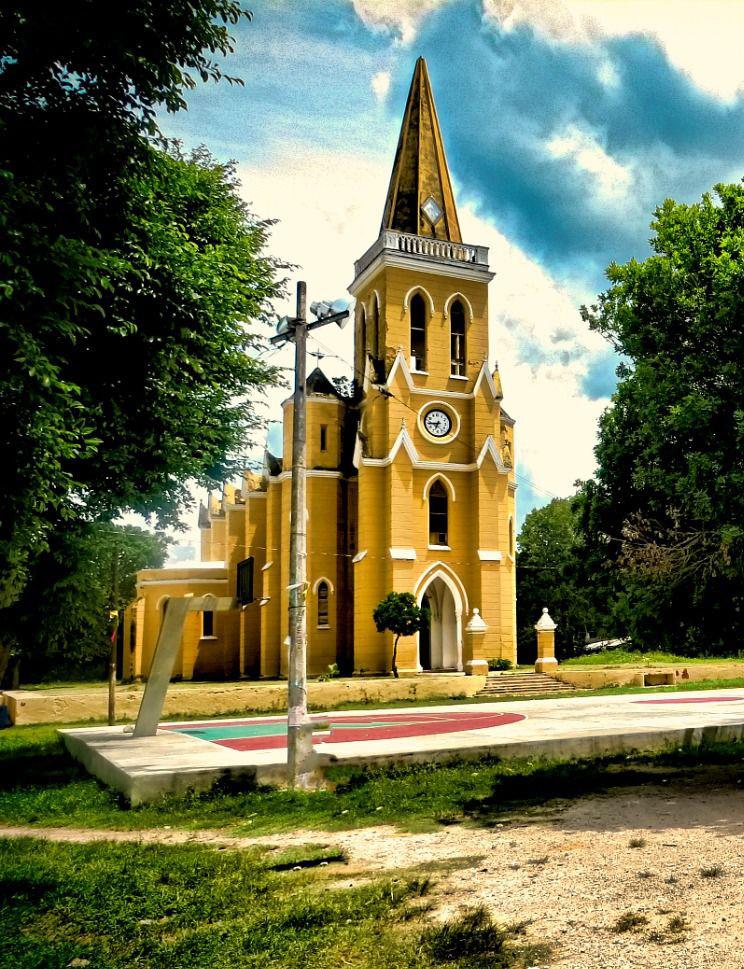
San José de la Montaña
THE GOTHIC CHURCHES AND CHAPELS
OF MÉRIDA AND YUCATÁN
From archaeological zones, cenotes, ha- ciendas, beaches, caves, “Magical Towns,” among others, they are some of the many wonders that are found in Yucatán State. If you are one of those visitors who are always taking pictures when you are dis- covering a new place and you happen to love and to appreciate the old buildings, then you are in the right place. Yucatán State boasts scores of colonial churches with majestic architecture that will catch your eye.
This month, we will cover some Gothic churches and chapels in Mérida and in Yucatán State. Just in admiring them, you will visually enrich yourself. We are confi- dent that you’ll want to take many photos and upload them to your Instagram!
Our Lady of Carmen (Quintero) Located in the historic Colonia, or Neighbhood, of Chuminópolis it’s in front of the former estate, “El Olvido,” once owned by the Quintero family. This chapel was built at the end of the 19th century and at the beginning of the 20th century during the Porfiriato (when Porfirio Díaz ruled Mexico, 1884-1911). Rafael R. Quintero donated part of his family estate for its construction.
Saint John Baptist Located in the Xcunyá police station, the Gothic Church of San Juan Bautista that dates back to the early 20th century. The staves are a distinguishing feature in the windows and so are the incorporation of Neo-Romantic architectural elements. The façade is topped by a spire on which one can read a sign dated with the year it was probably built: “SAN JUAN BAUTISTA XCUMYA 8 DECEMBER 1919.
San José de la Montaña Located in the Eknakán police station in the town of Cuzamá, its main attraction is the Church of San José de la Montaña, also known as Iglesia de la Soledad. Compared to the other churches and chapels, this one boasts a rare clock on its façade. The German Gothic-style enclosure dates from the late 19th and early 20th centuries. Inside the chapel there is a small wooden altarpiece of neo-Gothic style that corresponds to the 19th century; it bears the image of the Patron Saint Joseph.
LEARN ABOUT THE HISTORY OF ALL THE GOTHIC CHURCHES IN MÉRIDA AND YUCATÁN AT WWW.EXPLORE.MX
Como es bien sabido, la nomenclatura de los municipios de Yucatán se deriva de vocablos mayas y los apellidos que no son la excepción. De acuerdo con la obra “Relación de las Cosas de Yucatán” de Fray Diego de Landa, menciona que el apellido era sumamente importante porque las personas antiguas por medio de éste, sabían si pertenecían a la misma familia o linaje, debido a que la descendencia era considerada como un tema religioso que respetaban en sus jeroglífi
Una gran mayoría de los apellidos persisten hasta la fecha, muchos se derivan de animales, plantas o alimentos. A continuación, te dejamos un listado de los apellidos más usuales para que conozcas su significado.
Aké: Del vocablo aak´(bejuco) Baas: Del vocablo ba´as (maleta, petaca, baúl). Balan: Del vocablo báalam (jaguar). Caamal: De los vocablos ka´a, ka´(dos) y máal, clasificador numeral para contar veces o unidades. Su significado sería “dos veces o dos ocasiones”. Canul: De los vocablos kanan (protector, guardián), kanulo´ob (espíritus protectores de los montes) y Ul (sufijo que indica la forma intransitiva de un verbo). Cob: Del vocablo koob (mazorca húmeda rancia o maíz enmohecido). Dzal: Del vocablo ts´aal (presionar con los dedos). Dzib: Del vocablo ts´íib (escribir, escritor). Dzul: Del vocablo ts´uul (caballero) o j ts´uul (patrón). Ek: Del vocablo eek´ (estrella). Euán: Del vocablo wa´an (cosa detenida o parada) May: Del vocablo maay (pezuña, casco). Moo: Del vocablo mo´ (guacamaya). Mukul: Del vocablo muk´ul (escondido, encubierto, secreto). Pech: Del vocablo peech (garrapata). Pool: Cabeza. Sulub: Del vocablo suul (remojar) y el sufijo ub (indicativo de instrumento). Tec: Del vocablo teek (manatí). Tun: Piedra o roca. Tzuc: De los vocablos tsuuk (coleta, copete, buche, estomago, panza), y tsúuk (montón). Uc: Del vocablo uk´(piojo).


Editorial completa en www.explore.mx
MEANING OF MAYA SURNAMES
As is well known, the nomenclature of the municipalities of Yucatán is derived from Maya words. Surnames are no exception. According A Relation of the Things of Yucatán, written by Fray Diego de Landa in the 16th century, surnames were extremely important to the Maya because names allowed the Maya to know if they belonged to the same family or lineage. This was paramount because the descendants considered it a religious matter; they respected links to their hieroglyphics and writings. A vast majority of Maya surnames persist to this day. Many are derived from animals, plants, or food. Here we leave you a list of the most common Maya surnames still in use so that you understand their meaning.
Aké: From the word aak´ (vine) Baas: From the word ba´as (suitcase, flask, trunk). Balan: From the word baalam (jaguar). Caamal: From the words ka´a, ka´ (two) and máal, a numeral classifier to count times or units; in other words, it means “twice or on two occasions.” Canul: From the words kanan (protector, guardian), kanulo'ob (protective spirits of the mountains) and Ul (suffix that indicates the intransitive form of a verb). Cob: From the word koob (rancid wet cob or moldy corn). the fingers). Dzib: From the word ts´íib (to write, writer). Dzul: From the word ts´uul (knight) or j ts´uul (patron). Ek: From the word eek´ (star). Euán: From the word wa'an (thing stopped or stopped)
Dzal: From the word ts´aal (press with May: From the word maay (hoof, helmet). Moo: From the word mo´ (macaw). Mukul: From the word muk'ul (hidden, concealed, secret). Pech: From the word peech (tick). Pool: Head. Sulub: From the word suul (to soak) and the suffix ub (indicative of instrument). Tec: From the word teek (manatee). Tun: Stone or rock. Tzuc: From the words tsuuk (ponytail, forelock, crop, stomach, belly), and tsúuk (heap). Uc: From the word uk´ (louse).
